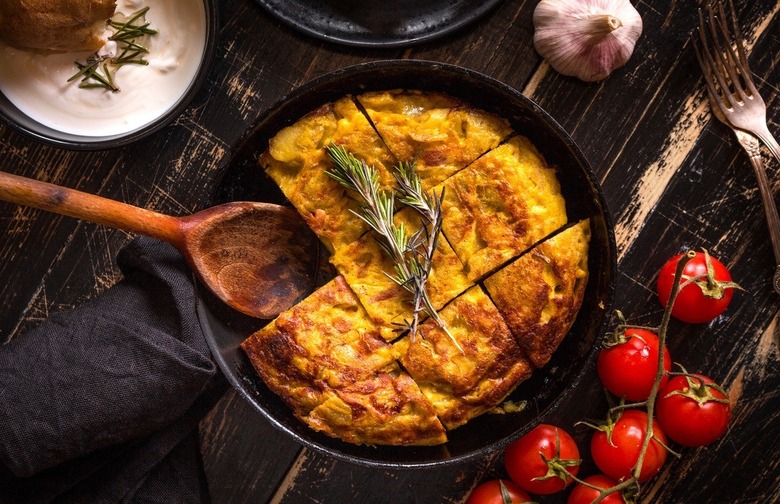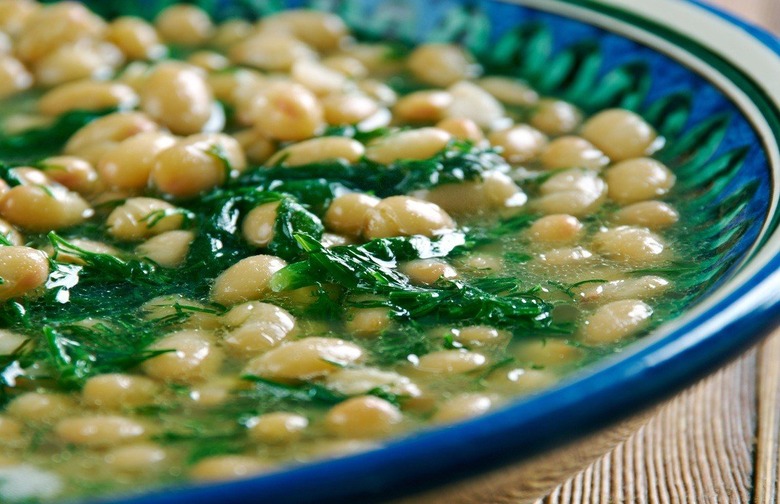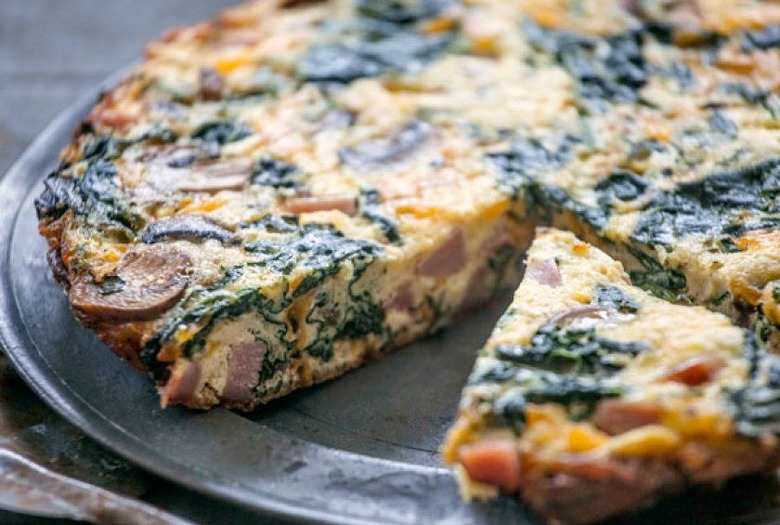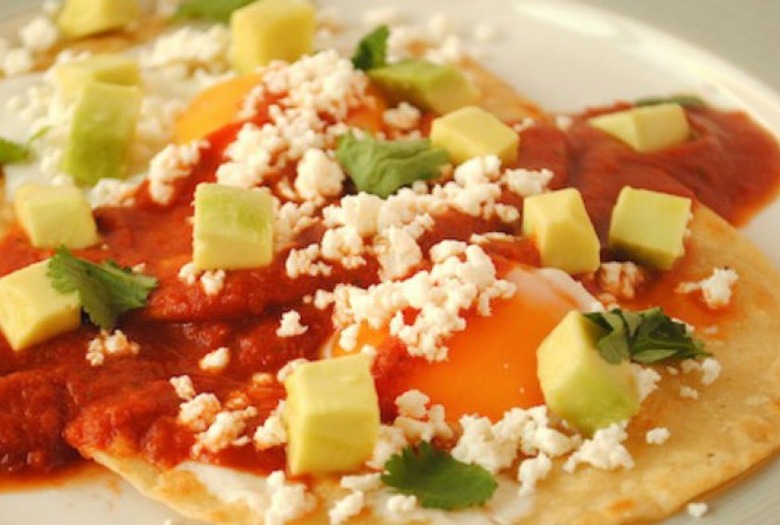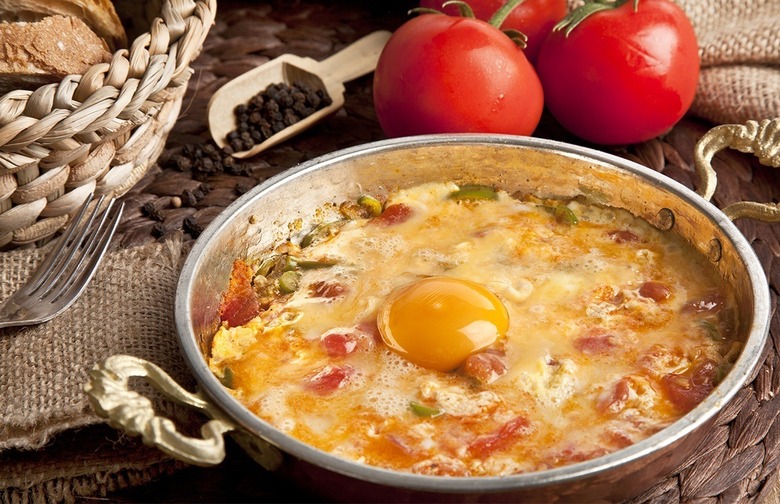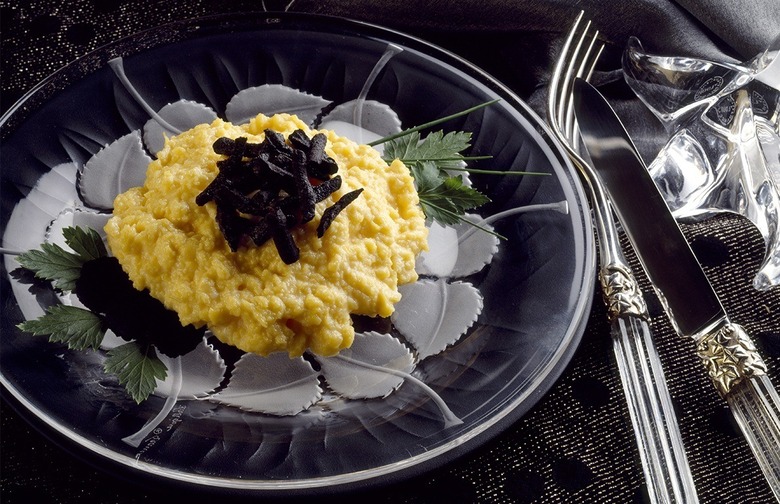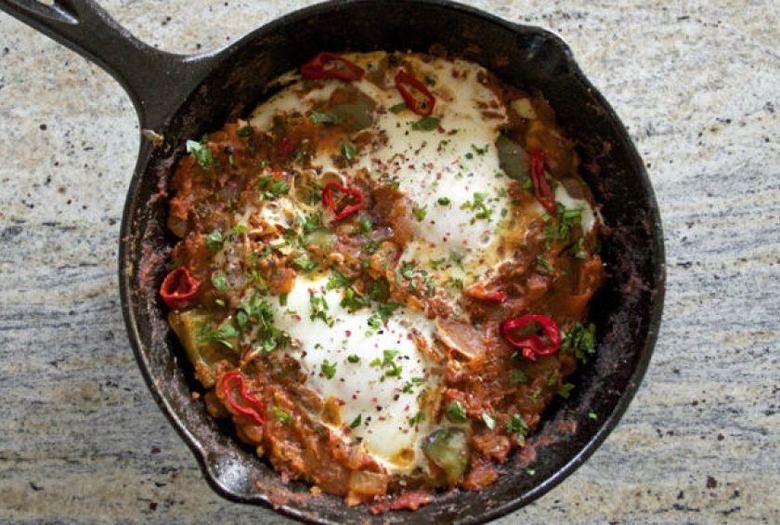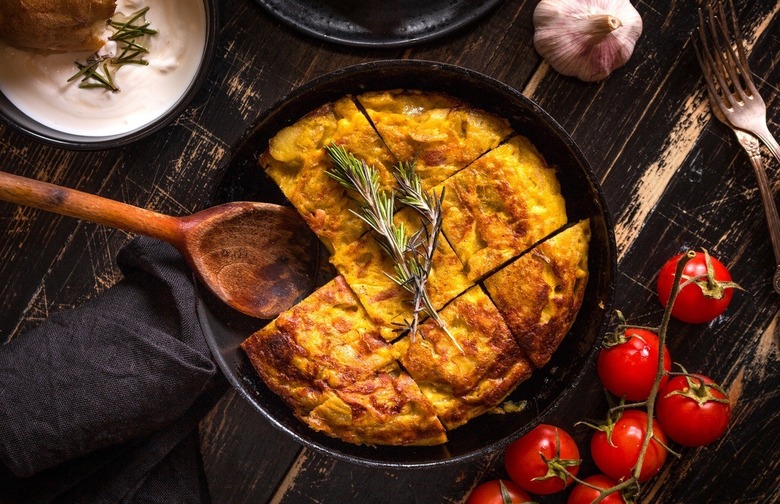The World's 21 Best Egg Dishes
This year marks the 21st annual observance of World Egg Day. On October 14, people around the world will be celebrating the incredible egg with festivals, cook-offs, omelette-making competitions, and more. (Take note that "Omelet King" Howard Helmer, a longtime spokesperson for the American Egg Board, holds three Guinness World Records for being the fastest omelette-maker in the world, having once turned out 427 two-egg omelettes in 30 minutes.
Eggs are universal, of course. Virtually every cuisine has found ways to use them creatively and deliciously. In honor of World Egg Day, we've compiled a list of some of the most iconic egg dishes served around the world.
Baghalai Ghatogh, Iran
Baghalai Ghatogh is an egg dish found in northern Iran in which eggs are baked in a dill and lima bean stew.
Balut, Philippines
Balut, a common Philippine street food, is a fertilized duck egg that has been boiled alive and is eaten straight out of the shell. It is controversial for obvious reasons but considered a special delicacy in Filipino cuisine.
Brik, Tunisia
Century Egg, China
Although the name "century egg" indeed suggests an egg aged hundred years, these eggs are only a few weeks to a couple of months old. Also called "pídàn," they are preserved in a mixture of clay, ash, salt, quicklime, and rice hulls until they ferment; they shells emerge stained green-gray and brown, and the whites turn salty and gelatinous.
Dippies, England
"Dippies" is an affectionate colloquial name given to soft boiled eggs served with "soldiers" or thinly sliced toast strips that are dipped into the runny egg yolk.
Eggs Benedict
There is debate over exactly where the original version of this classic dish was first crafted, but they all involve some corner of New York City. This emblematic American dish is made with a toasted English muffin, Canadian bacon, and a poached egg smothered in hollandaise sauce.
Egg en Cocotte, France
This dish is quite simple to prepare yet looks delicate and refined when presented. In this recipe, whole eggs are cracked into a ramekin, seasoned, and drizzled with cream. The eggs then head into the oven and are baked until just set.
Egg Tart, China
Portuguese custards were first introduced to Hong Kong in the 1940s and Chinese culture has since adopted the pastry. These tarts are comprised of a light pastry filled with a simple egg custard. Found both in savory or sweet varieties, the integrity of the egg flavor is maintained in both recipes.
French Omelette, France
The technique behind making a classic French omelette is not easy, it requires a quick hand and sharp instincts. In fact, it is said that many fine-dining restaurants use this humble egg dish as an interview tool to judge the talent and culinary acumen of prospective chefs.
French omelettes are made by pouring thoroughly beaten eggs into a pan and quickly agitating them with a fork just until the mixture is set. After a moment of cooking, the omelet is carefully rolled and slid from the pan to the plate. Texturally, the outside is impressively smooth with no sign of browning and the inside is very soft and runny— or, as the French say, "baveuse," or "drooling."
Frittata, Italy
The frittata is like a crustless quiche; eggs are beaten and mixed with a variety of vegetables, meats, cheeses, even pasta in a skillet on the stovetop. Frittata is related to the Italian word for "fried," a reference to the cooking of the eggs in a skillet.
Huevos Divorciados, Mexico
Literally "divorced eggs," this Mexican egg dish is made by frying two eggs sunny-side up then surrounding each in a different salsa — one green, one red.
Huevos Ranchos, Mexico
Huevos rancheros, aka "rancher's eggs," are a popular Americanized breakfast and brunch dish with roots south of the border. In its basic form, it is comprised of corn tortillas topped with fried eggs, doused in a tomato-based salsa, and then served with rice, beans, and avocado.
Menemen, Turkey
Migas, Mexico; Spain; Portugal
This is a dish that has transformed through time and cultures. It is made by frying old bread (Spain and Portugal) or old tortillas (Mexico) in oil until crispy and then mixing the pieces with scrambled eggs. Accompanying spices and vegetables also vary by region.
Oeufs Brouillés aux Truffles, France
This elegant French dish scrambles eggs over the lowest possible heat (often in a double-boiler) to achieve a soft and creamy consistency. To add decadence, the final dish is garnished with shaved black truffles and sprinkled with minced chives.
Onsen Tamago, Japan
The name of this specialty translates to "hot spring eggs." Historically, whole eggs would be cooked in naturally in the water of hot springs. Today these eggs are still slow-poached in their shells — although in the controlled environment of kitchens — then cracked into dashi, a broth made with kelp and preserved fish. The egg whites are custardy while the yolks are completely set, yet soft.
Scotch Egg, England
In this UK delicacy boiled eggs are encased in sausage meat and rolled in breadcrumbs before being baked or deep-fried. Scotch eggs are considered an ideal picnic snack and most often consumed at room temperature.
Shakshouka, Morocco; Tunisia; Israel
Shakshouka is a popular Middle Eastern dish eaten above all in Morocco, Tunisia, and Israel. Traditionally, it is a simple preparation of sautéed peppers, onions, and spices in tomato sauce. A similar Italian dish called uovo in purgatorio, or "eggs in purgatory," involves a classic Italian tomato sauce and a garnish of basil.
Soufflé, France
The French verb souffler means "to blow" or "to puff up" — which is exactly what the eggs do in this famous preparation. The secret to a traditional soufflé, which can be made savory or sweet, is in the egg whites. The whites are beaten until firm peaks are formed and then gently folded into a custard base. The mixture is immediately placed in the oven and cooked until risen and set. Texturally, this dish is almost magically light and airy.
Tamagoyaki, Japan
Tamagoyaki is a Japanese-style omelette made by rolling together many thin layers of cooked egg and cooked in a special rectangle pan called a makiyakinabe. Tamagoyaki eggs are often served as nigiri in sushi restaurants.
Tortilla Española, Spain
Served hot or cold and at nearly any time of day, this tortilla is an iconic Spanish dish made modestly with eggs and potatoes. To prepare it, starchy potatoes are thinly sliced and fried in oil until soft; then, beaten eggs are mixed into the pan and the tortilla is slowly cooked, (and flipped halfway through) until set and firm.
